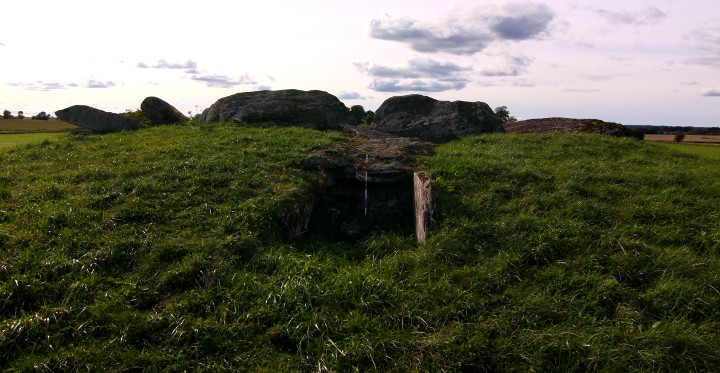The passage grave in Tolarp is the biggest megalithic tomb in southern Halland and is almost 5000 years old. The chamber is 2.5 x 6.5 metres, and the passage is 4.5 metres long. It was investigated ande restored 1926.
I forgot to take a compass reading of the passage, i’ll try to do it the next time I pass the area.
Info board on site in Swedish and English.
How to get there:
At Halmstad, take the exit from highway E20 to road 25 towards Ljungby. Drive 1.5 kilometres and take the 1st exit in the roundabout. After 50 metres, turn left at the blue sign “Mästkocka”. After 700 metres, turn left after the church, at the sign “26 Mästkocka”. Drive for 4.1 kilometres, then turn left at yellow signs “2 Tolarp” and “Gånggrift”. After 1.1 kilometres the site is on the left, and parking spot to the right after further 10 metres.








































